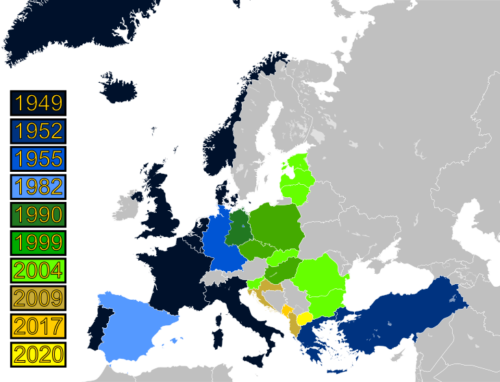Regional Security
Disappearing the Dead: Iraq, Afghanistan, and the Idea of a “New Warfare”

European Armed Forces of Tomorrow: A New Perspective
The Wages of War: Iraqi Combatant and Noncombatant Fatalities in the 2003 Conflict
The Sources of Terrorism
Fear-mongering and the Next Unnecessary War
Burning Down the House: How the Iraq War Will Affect the International System
Reconstructing Iraq: Costs and Possible Income Sources
Inspecting Iraq: A Record of the First 40 Days
First Strike Guidelines: the case of Iraq
The Pentagon’s New Budget, New Strategy, and New War
Dislocating Alcyoneus: How to combat al-Qaeda and the new terrorism
Strange Victory: A critical appraisal of Operation Enduring Freedom and the Afghanistan war
Bush Administration Policy Toward Europe: Continuity and Change
German Defense Planning: In a Crucial Phase
What Justifies Military Intervention?
Disengaged Warfare: Should we make a virtue of the Kosovo way of war?
Kosovo and the Just War Tradition
Europe’s Armed Forces at the Millennium: A Case Study of Change in France, the United Kingdom, and Germany
Slovenian Security in the European Perspective
The Coming Transformation of the Muslim World
Alleged ‘Carrier Gap’ is Out to Sea
Nato Expansion: Costs and Implications
America’s New Deal With Europe: NATO Primacy and Double Expansion

General Trainor’s Korean War Scenario is Only Half the Story
Asia Pacific Tilts to West: Limit Offensive Weaponry, Boost Arms Control
by Carl Conetta and Charles Knight, commentary originally published in Defense News, 31 March – 06 April 1997.
➪ HTML
Examines the pattern of military spending in the Asia Pacific region since the Cold War and makes recommendations for U.S. policy. Based on data and analysis from Post-Cold War US Military Expenditure in the Context of World Spending Trends.
Framework for Constructing a “New Era” Alternative to the Bottom-Up Review
➪ HTML
Based on the strategic objective of a core area coalition defense (i.e. Persian Gulf, Korea, and Europe) this memo takes the reader step by step through the logic of force sizing and structuring and modernization requirements to arrive at a robust and consistent alternative to the Bottom-Up Review force posture.
On the Threshold of Change: South African Defence Review reflects the continuing struggle to define a military policy for the new era
Key Issues in Current South African Defense Planning
Building Confidence into the Security of Southern Africa
This report offers guidelines for the development of cooperative regional security and specifies a South African defense posture that would support and encourage cooperation. It includes specifications of the fundamentals of a confidence-building defense posture for the region.
Defensive Restructuring in the Successor States of the former-Yugoslavia
➪ HTML
This report offers an alternative to “balancing” the arms in the former Yugoslavia by way of transfers and military aid. Instead, it illustrates the restructuring of the region’s militaries toward greater stability with “mutual defensive superiority.” This study was initiated at the request of Ambassador Jonathan Dean who serves on PDA’s Research Advisory Board.

